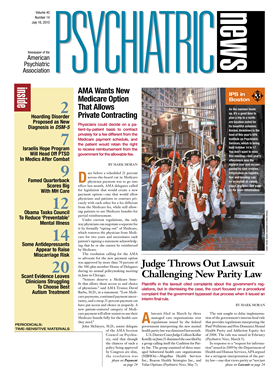A series of new federal grants aims to encourage the development of legal structures and patient-care policy changes with the goal of reducing the number of medical malpractice lawsuits.
The Agency for Healthcare Research and Quality awarded $25 million in funding in June for state programs to improve patient safety and thus reduce the number of malpractice lawsuits patients file. The grants are part of a patient safety and medical liability initiative that President Obama first outlined in September 2009 as part of his effort to garner physician support of the massive health care overhaul legislation then moving through Congress.
The legislation had drawn criticism from some physicians for omitting any federal changes of the nation's malpractice-related laws.
The new grants will fund demonstration projects aimed at reducing preventable injuries, ensuring that patients are compensated more quickly by physicians and hospitals in cases of legitimate claims, improving communication between physicians and patients, and reducing liability insurance premiums. Included in the funding is a series of one-year grants that, among other provisions, will fund the development of evidence-based guidelines to curb lawsuits, craft state legislative proposals to define a legal standard of care for health care providers, and develop measures to reduce patient suicides.
The initiative drew praise from the AMA. (APA does not have a position on this particular initiative but generally supports efforts to reform malpractice law.)
“As our nation works to reduce the growth in health care costs, it's clear that medical liability reform must be part of the solution,” said then AMA president J. James Rohack, M.D., in a June 11 statement.
Although the AMA had urged Congress to include comprehensive tort reform within the health care overhaul, the AMA opted to continue providing critical support to the legislation when such measures did not make it into the final version of the bill.
The health reform law enacted in March included only limited “demonstration projects” aimed at curbing such lawsuits.
The need for broader federal action to curb malpractice lawsuits was based on research, such as a December 2009 report by the nonpartisan Congressional Budget Office (CBO), which described the impact of clinicians ordering more tests or procedures than are necessary primarily to protect themselves from lawsuits. According to CBO researchers, medical-liability reform proposals at the federal level could save at least $54 billion over 10 years, in part by reducing the need for physicians to practice defensive medicine (Psychiatric News, February 5).
In responding to the new grant program, Rohack also praised the more extensive medical liability changes enacted in states such as California and Texas. In Texas, for example, legislators placed a $250,000 cap per claimant on noneconomic damage awards, limited time for filing a malpractice case, toughened the standard of proof, and allowed damage payments to be paid out periodically.
Instead of moving toward comprehensive liability reform, the new grants target state efforts to streamline lengthy legal processes. Programs included under the grants are those to develop a judge-directed legal-negotiation program, “safe harbors” for following state-endorsed evidence-based care guidelines, and early disclosure of medical errors by hospitals and clinics with offers of prompt compensation. The goal of such efforts is to expedite the legal process and lower the overall legal costs of malpractice litigation.
